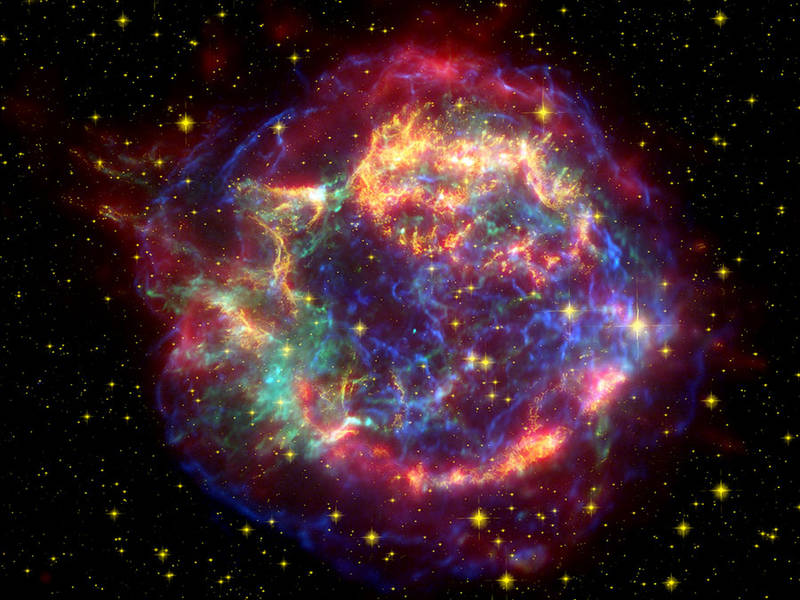First biological signature of a supernova
May 10, 2013

Remnants of a similar supernova explosion in the constellation Cassiopeia, about 11,000 light-years away. (Credit: NASA/JPL-Caltech/STScI/CXC/SAO)
Researchers at the Technical University of Munich have found a radioactive iron isotope in bacteria microfossils.that they trace back to a supernova in our cosmic neighborhood.
This is the first proven biological signature of a starburst on our earth. The age determination of the deep-drill core from the Pacific Ocean showed that the supernova explosion must have occurred about 2.2 million years ago, roughly around the time when the modern human developed.
Magnetotactic bacteria live within the sediments of the Earth’s oceans, close to the water-sediment interface. They make within their cells hundreds of tiny crystals of magnetite (Fe3O4), each approximately 80 nanometers in diameter.
The bacteria obtain the iron from atmospheric dust that enters the ocean. So nuclear astrophysicist Shawn Bishop from the Technische Universitaet Muenchen conjectured that Fe-60 should also reside within those magnetite crystals produced by magnetotactic bacteria that existed at the time of the supernova interaction with our planet. These bacterially produced crystals, when found in sediments long after their host bacteria have died, are called “magnetofossils.”